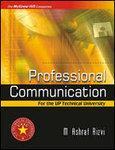 26.0%OFF
26.0%OFF

Download App
 26.0%OFF
26.0%OFF
Robotic Engineering : An Integrated Approach
-
ISBN
:
9788120308428
-
Publisher
:
Phi Learning
-
Subject
:
Others
-
Binding
:
Paperback
-
Pages
:
768
-
Year
:
2009
₹
375.0
 26.0% OFF
26.0% OFF
₹
277.0
Buy Now
Shipping charges are applicable for books below Rs. 101.0
View DetailsEstimated Shipping Time : 5-7 Business Days
View Details-
Description
The text presents both the theoretical and the practical concepts of robot design and functioning. It combines the areas of controls, computers (both hardware and software), measurement technology, pattern recognition and various aspects of mechanical engineering including statics, dynamics, kinematics and mechanical design. It also discusses present and future robotic applications as well as the economics of robots. Beginning with a fairly extensive introduction to the subject, the book then delves into such areas as Key Features The robot’s various components parts. How robots are utilized in automated systems. How certain mechanical components behave and how power is transmitted from actuator to load. How classical servo theory is applied to control a robot joint. The characteristics of various actuators/amplifiers, and how they are selected for a specific robot application. Non vision-based robotic sensors and robotic vision. Architectural and hardware/software consideration sand sequence programming aspects. Coordinate transformation and how to obtain forward and inverse solutions. The design of various aspects of a robot in a specific application as a way of tying together much of the material presented in the rest of the book. About The Author RICHARD D. KLAFTER, Professor, Deptt. of Electrical Engineering, Temple University, Philadelphia, Pennsylvania. THOMAS A. CHMIELEWSKI, Unit Manager, General Electric, Advanced Technology Laboratories, Moores-town, New Jersey, and Drexel University, Electrical & Computer Engineering Department. MICHAEL NEGIN, President, Mnemonics, Inc., Mount Laurel, New Jersey. Table Of Contents Preface. Introduction. Systems Overview of a Robot. Mechanical Systems Components, Dynamics and Modeling. Control of Actuators in Robotic Mechanisms. Robotic Sensory Devices. Computer Vision for Robotics Systems A Functional Approach. omputer Considerations for Robotic Systems. Transformations and Kinematics. Design Example. Appendices—A Specifications of Commercial Robots. B Motor Selection in the Design of a Robotic Joint. C Digital Control of a Single Axis. Index.












 277.0
277.0











 0.0
0.0